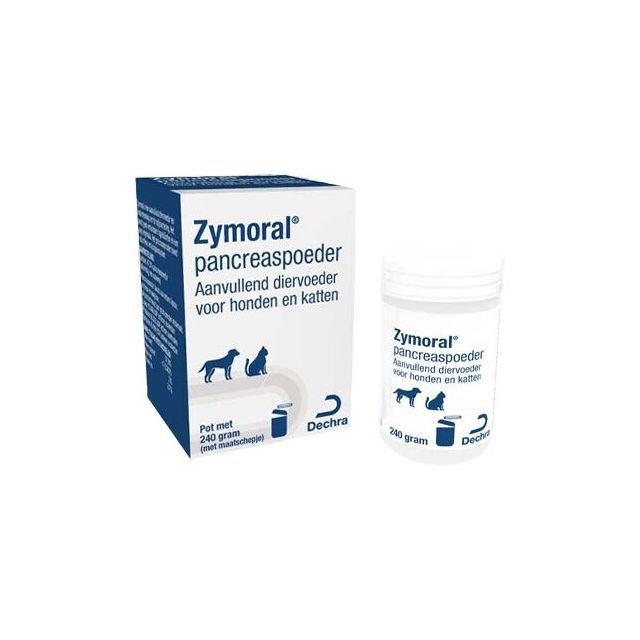Exocrine pancreatic insufficiency in the dog
With EPI, the pancreas no longer produces digestive juices. As a result, your dog can no longer digest its food properly. Your dog eats a lot, but absorbs hardly any energy and will therefore lose weight. Fortunately, exocrine pancreatic insufficiency can be treated effectively, and with some adjustments, your dog can lead a normal life. Pharmacy4pets helps you find the right support for your dog with EPI.
What is exocrine pancreatic insufficiency?
Pancreas is the Latin name for the pancreas. This flat, narrow organ lies along the small intestine, just behind the stomach. The duct of the pancreas empties into the small intestine.
The pancreas consists of two parts:
- The endocrine pancreas: hormones (insulin and glucagon) are produced here to regulate blood sugar levels. If there is insufficient insulin production, it results in diabetes.
- The exocrine pancreas: this part produces digestive enzymes that are released into the small intestine to digest food.
With EPI, exocrine pancreatic insufficiency, something goes wrong in the exocrine part of the pancreas. The term "insufficiency" indicates that the amount of digestive juices produced is too low.
How does EPI develop?
Exocrine pancreatic insufficiency is usually the result of chronic inflammation caused by the body's own immune response. EPI can also develop as a result of chronic inflammation of the pancreas.
Which dogs get EPI?
EPI is more common in German Shepherds. Weimaraners and Westies are also more susceptible to the condition. EPI often occurs at the age of one or two years. Older dogs can also develop the condition, often as a result of chronic pancreatitis.
Symptoms of EPI
Because insufficient digestive juices are produced to digest food, a dog with EPI lacks nutrients to meet its energy needs. The main symptoms of exocrine pancreatic insufficiency are:
- Severe weight loss.
- Enormous appetite.
- Large amounts of stool.
- Gray-colored diarrhea (the color of putty).
- Eating 'foreign' objects (pica): Due to the intense hunger, dogs with EPI search for food and may eat things that are not intended for consumption. This includes human food, garbage, feces, but sometimes also sand, stones, or toys.
Diagnosing EPI in dogs
The symptoms of EPI are quite characteristic but can also be caused by other gastrointestinal diseases. Therefore, the diagnosis must be confirmed with blood tests. The test is called TLI (trypsin-like immunoassay). If the measured value is too low, it indicates EPI. The dog must fast for this test; otherwise, the value may appear normal, leading to a missed diagnosis.
Treating EPI in dogs
EPI is treated with pancreatic enzymes in powder form: Zymoral pancreatic powder.
It's essential to add this powder to every meal and snack.
The powder should be thoroughly mixed with the food, preferably a while before feeding, to allow it to act. Dry kibble should be lightly moistened before mixing it with the powder to ensure good adhesion.
It's also important to provide easily digestible, non-greasy food, such as Sanimed Intestinal. Divide the food into at least two portions per day. Although dogs with EPI need lifelong dietary adjustments, they can otherwise lead a normal, healthy life. However, caution is needed: if they pick up something from the ground that logically isn't mixed with pancreatic powder, they won't be able to digest it and will develop diarrhea.
If you have any questions about our products or about exocrine pancreatic insufficiency in dogs, please contact us.


